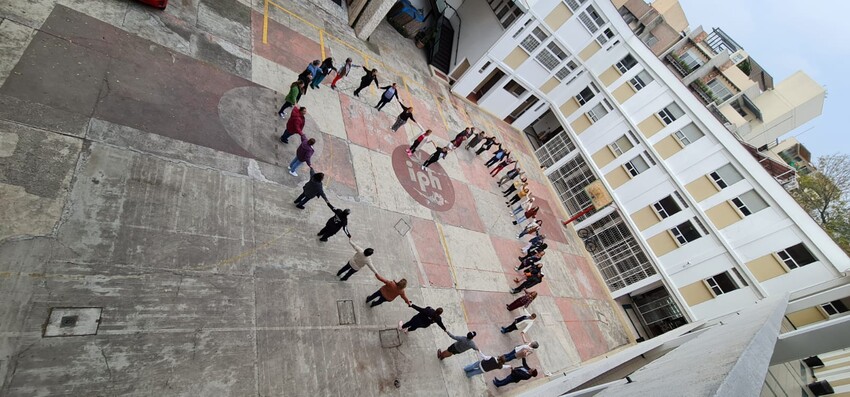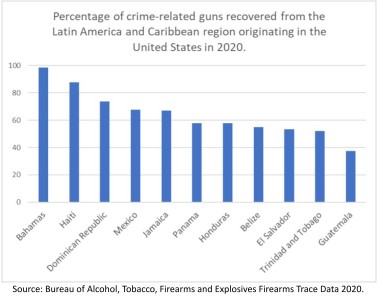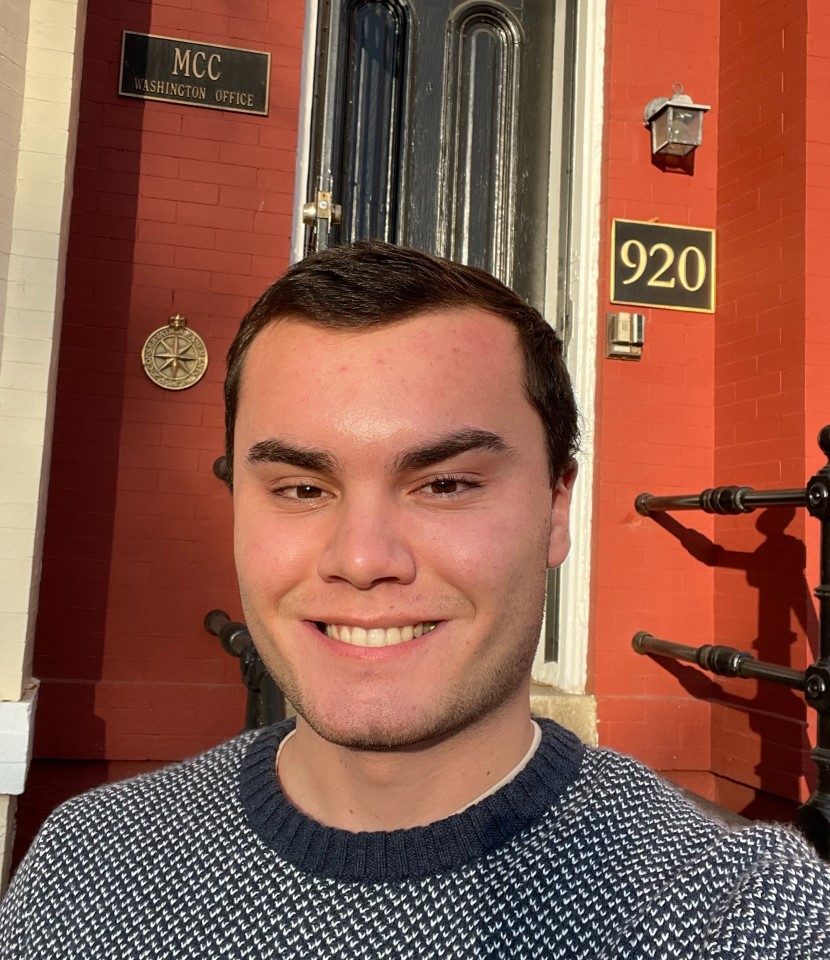Why U.S. gun sales south of the border matter
Aidan Yoder calls on readers to support legislation that would limit illegal gun sales and legal gun exports to Mexico and Latin America. Easily accessible guns contribute to rising violence.

Victor Yunuen Mendoza Vivas lives in Acapulco, Mexico. He knows what gun violence is like firsthand because his life has been forever changed by it. His mother, Marina Vivas, was murdered six years ago along with her friend Rosy.
Mendoza Vivas received a call from a family member of Rosy, informing him that his mother had been shot and killed. His mother’s workers’ union covered the funeral expenses but did not offer any additional support. Mendoza Vivas’ aunt provided a home for his younger, 12-year-old sister, and he worked to provide financial support.
Mendoza Vivas’ testimony was recorded by MCC partner Centro de Estudios Ecuménicos and included in a joint organizational report on the impacts of gun violence in Mexico.
When the report with Mendoza’s testimony was released in October 2021, he still had no information about the attackers and no evidence that the police had investigated the murders.1 The gun used to commit the murders was never recovered; however, given that 70% of crime-related guns in Mexico are traced to the U.S., it more than likely originated there.2
Many other young people, including some of Mendoza Vivas’ own friends, have lost family members and even been orphaned due to organized crime violence. Mendoza Vivas believes that the police have not done their job to provide security. Since his mother’s murder, Mendoza Vivas has completed a law degree and now works for his local city council while continuing to support his sister.
Gun violence is not only a problem in Mexico. Several countries in Latin America and the Caribbean are facing instability due to gang violence, organized crime and high homicide rates, in large part due to both the legal export and illegal sales of U.S. guns to the region.
In Haiti, in the first 8 months of 2023, over 2,400 people were killed by gang violence.3 The United Nations estimated that, in 2020, there were approximately 270,000 illegal firearms in Haiti, many of which originated in Florida due to its weaker weapons sales’ restrictions.4

The U.S. Government Accountability Office found that more than 40% of crime-related guns recovered in El Salvador, Honduras and Belize originated in the U.S. The flow of U.S. weapons into the region is enabling, if not creating, tangible harm and violence, driving people to migrate to the U.S. and elsewhere.
Gun traffickers take advantage of looser gun regulations in the U.S. to sell firearms throughout the region. In research for his book Blood Gun Money: How America Arms Gangs and Cartels, a gang hit man told author Ioan Grillo that the gang acquired guns from El Paso on demand.
One U.S. based gun manufacturer, Colt, produced a limited-time pistol in 2008 engraved with an image of the Mexican revolutionary Emiliano Zapata. One of those pistols was found to have been used in the murder of Mexican investigative journalist Miroslava Breach while she was taking her son to school in Chihuahua. Breach had reported on political corruption tied to the drug cartels and received threats for the stories she wrote exposing drug smuggling to the U.S.5
According to Jeremiah 22:3(NRSV), God instructs us to: “Act with justice and righteousness, and deliver from the hand of the oppressor anyone who has been robbed. And do no wrong or violence to the alien, the orphan, and the widow, or shed innocent blood in this place.”
How does our faith call us to help those impacted by gun violence in the U.S. and abroad? As followers of Christ, we are called to be peacemakers and work for justice. As we see the pain that U.S.-made guns cause, what can we do to decrease this flow of weapons? What can we do to prevent more violence and pain?
In October, the U.S. Department of Commerce announced a 90-day pause on issuing new export licenses on certain firearms to study the “risk of firearms being diverted to entities or activities that promote regional instability, violate human rights, or fuel criminal activities.” While this is a good first step, more must be done on a policy level to curb organized crime with U.S.-made guns in Latin America and the Caribbean.
The Americas Regional Monitoring of Arms Sales or ARMAS 6 Act of 2022 (H.R. 6618) would require the U.S. departments of State and Commerce to create a detailed strategy to counter gun trafficking from the U.S. and allow Congress to block certain small arms distributors. Improvements would also be made in data collection which would aid in crafting next steps to combat gun trafficking and help identify the end users of illegally trafficked weapons.
Another important policy change would be to return oversight of U.S. gun exports to the U.S. State Department. In 2020, oversight and authorization of firearm exports was shifted from the State Department to the Commerce Department. The State Department considers issues of national security and human rights, whereas the Commerce Department focuses on developing industry.
That shift resulted in a large increase of firearm export licenses and a loss of focus on issues of stability and security for both the U.S. and our neighbors. Returning firearm export oversight to the State Department would reduce the ability of criminal actors to obtain U.S.-made weapons.
Our faith calls us to action to help those like Mendoza Vivas, Breach and others who are harmed by gun violence. One way to do that is by urging your members of Congress and the Biden Administration to work to reduce the number of U.S. guns that make their way to criminal gangs in Latin America and the Caribbean.
Top photo: Relatives of disappeared people in Mexico hold hands, forming a heart, during the December 2023 national gathering of the Movement of Our Disappeared. Legal exportation and illegal sales of U.S. guns contribute to violence, such as the abduction of individuals by government security forces or by armed, organized crime groups. Photo courtesy of Movement of Our Disappeared

Aidan Yoder, Iowa, was an intern with the MCC U.S. National Peace and Justice Ministries in the fall of 2023 through the Washington Community Scholars Center. He is a student at Eastern Mennonite University, Harrisonburg, Virginia. Aidan is pictured to the right in front of the MCC office in Washington, D.C. MCC Photo/Aidan Yoder

